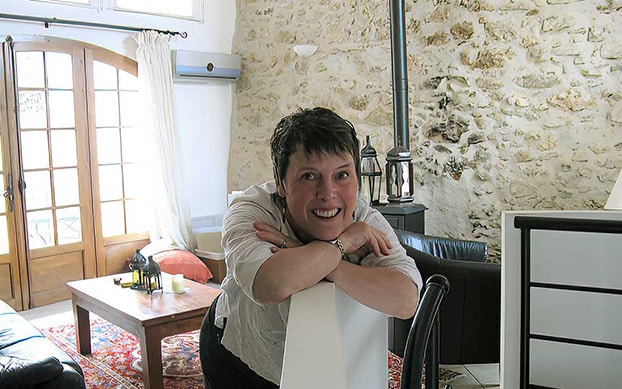Selling your share in a fractional ownership home may involve different steps than selling a whole property, but it’s still a fairly straightforward process. Like traditional real estate, the key ingredients are realistic pricing and access to buyers who understand and seek to own the type of property you are looking to sell.
Review Your Ownership Agreement
The first step is to revisit your original ownership documents. Fractional ownership homes typically involve an agreement that defines what is (and isn’t) allowed when it comes to reselling a share.
Key things to look for:
- Resale terms – Are there limitations on when or how you can sell your share?
- Right of first refusal (ROFR) – Do your co-owners or the management company have the legal right to purchase your share before you offer it publicly?
- Transfer procedures – Is there a specific process you’re required to follow for legal and administrative purposes?
- Marketing restrictions – Are there limitations on how or where you can list your share?
Understanding these details upfront will save time and prevent missteps later.
Understanding the Fractional Real Estate Market
Managing your expectations
The market for fractional ownership homes is smaller, and buyers are more specific. A realistic mindset helps avoid frustration and improves your chances of a successful sale.
Key points to keep in mind:
- Having support helps: Resales are easier when the original company is still active and offers assistance.
- Sales often take time: Months, not weeks, is a common timeline—especially in niche markets.
- Price depends on demand: What you paid matters less than how desirable the home, location, and usage period are today.
- Buyers need clarity: Many are new to fractional ownership and will have questions about costs, scheduling, and structure.
Choose a Resale Approach
You generally have two options when selling:
A. Work Through the Management Company
Many fractional ownership programs offer resale assistance. This often includes:
- Listing your share on their website
- Handling buyer inquiries
- Facilitating paperwork and legal transfer
- Ensuring the sale complies with the ownership agreement
While this typically comes with a commission or administrative fee, it can significantly reduce the workload and help connect with qualified buyers already familiar with the co-ownership model.
Some companies that sold fractional homes in the past may no longer be active, which can complicate resales. International Property Shares, by contrast, has been operating for over 25 years and continues to support both buyers and sellers with resale coordination and documentation.
B. Sell Independently (Fractional Ownership For Sale By Owner)
Some co-owners choose to market their shares on their own: through word of mouth, real estate platforms, or vacation property forums.
In this case, you’re responsible for everything: writing the listing, answering buyer questions, negotiating terms, and managing the legal transfer (within the guidelines of the ownership agreement).
Independent sales can work, but they require more effort and usually take longer to close unless the seller has a strong, targeted audience.
Setting a Reasonable Asking Price
Resale pricing should reflect real-world demand.
To price your share realistically:
- Note any upgrades or changes that might affect desirability
- Research comparable shares (if available)
- Consider how many weeks are included and when they typically fall
- Take into account the annual costs, management fees, and dues
- Ask the management company if any shares have recently sold and at what price
Shares that are clearly presented with accurate information, appealing photos, and transparent costs tend to attract more serious interest.
Creating a Clear, Accurate Listing
A well-prepared listing should include:
- Number of weeks per year and the scheduling method
Be clear about how the usage calendar works. Most co-ownership homes operate on a rotating schedule, so specific weeks change from year to year. Buyers will want to understand how time is allocated and whether popular seasons are shared evenly among owners. - Description of the home and its location
- Photos (usually provided by the management company)
- Annual costs and what they cover
- Usage rules (pets, guest policies, etc.)
- Details about the ownership structure (LLC, co-op, etc.)
Avoid exaggeration or vague language. Most buyers of fractional ownership real estate tend to be well educated, do their homework and are looking for transparent information.
Reaching a Targeted Audience of Fractional Ownership Home Buyers
General real estate platforms do not produce much traction for fractional ownership resales. Instead, consider:
- Listing on the management company’s resale site
- Requesting outreach to their email list of interested buyers
- Sharing with personal networks who may be familiar with your experience
- Posting in travel or second-home forums where fractional ownership is understood
If the management company has a buyer waitlist, ask if your share can be promoted to those individuals.
Coordinating the Legal Transfer
Once you’ve found a buyer and agreed on the terms, you’ll need to complete the transfer according to the procedures in the ownership agreement. This typically includes:
- A signed purchase agreement
- Payment of any required transfer or admin fees
- Execution of legal documents transferring ownership
- Notification to co-owners (if required)
- Updating ownership records and scheduling systems
In most cases, the management company or an affiliated legal service will handle the technical steps. If not, you may need to work with a real estate attorney familiar with fractional real estate structures.
Prepare for Tax Reporting
For tax purposes, it’s important to keep records of your original purchase price, sale proceeds, and any related selling costs. These figures help determine whether you’ve realized a gain or loss. A tax advisor can guide you based on how the property was held and your country of residence.
Keep records of:
- Your original purchase price
- Sale proceeds
- Associated selling costs (commissions, legal fees)
Learning more about the Fractional Home Ownership Process
Fractional ownership doesn’t trap you—there’s a real exit path. While it’s not instantaneous, resale is built into the structure, and with proper documentation and guidance, it remains a viable way to recapture value or move on when circumstances change.
Whether you’re planning to sell a share or considering a purchase and want to understand the full life cycle of fractional ownership, expert guidance can make a difference. Ginny Blackwell has helped hundreds of buyers and sellers navigate this niche market with clarity. Start with a FREE consultation
In your consultation, you can:
- Get clear answers about how co-ownership actually works
- Learn what type of share best fits your lifestyle and travel goals
- Explore available properties in France and Italy
- Understand costs, legal structure, and how the calendar is managed
- Ask anything—no pressure, just honest insight








